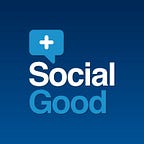PWD Can: A Look at the Status of the Person with Disabilities, the World’s Largest Minority
By +SocialGood Connector Clarisse Joy Mañabat
The Person with Disability (PWDs) is the world’s largest minority, comprising of 15% of the world’s population or an estimated 1 billion people. According to United Nations Convention on the Rights of Persons With Disabilities (CPRD), PWDs include those who have long-term physical, mental, intellectual, or sensory impairments, which in interaction with various barriers may hinder their full and effective participation in society on an equal basis with others.
Between 110 million and 190 million adults have significant difficulties in functioning. Even though there are advancements in the medical field and technology, these figures are still rising. Inaccessible health programs and centers, poverty, unhealthy lifestyle, spread of chronic diseases, ageing, war, and natural disasters are only some of the reasons.
The United Nation Convention on the Rights of persons with Disabilities has the highest number of signatories of any UN Convention, with 163 countries included in the agreement. However, even with the convention’s adoption in 2006, only 45 countries have anti-discrimination and other disability-specific laws.
Globally, there are about 80% PWDs that live in low-income or developing countries. The majority of them are poor and lack access to basic social services such as health, education, employment, and transportation. These gaps compound and help make PWDs the world’s most vulnerable population. Watch the video below and then read on to learn more about the systemic barriers PWDs face when trying to navigate society:
Health: PWDs report seeking more health care than those people without disabilities. According to World Health Organization, between 76% and 85% of people with mental disability living in developing countries receive no health treatments. As seen in the above video, in Brazil, thousands of children and adults with disabilities are confined inside institutions for their entire lives. After the Human Rights Watch researchers visited the institutions, they found out that they did not provide basic needs and carried out abusive practices.
Education: The scale of disability and its concentration in the world’s poorest countries contributes significantly to marginalization in education. According to the UN, 90% of children with disabilities in developing countries do not attend school. This and other barriers keeps the literacy rate for adult PWDs at a shockingly low 3%.
Employment: PWDs are often unemployed or in a job which pay them less. In the Philippines, only government offices and corporations with more than 100 employees are required to reserve at least 1% of their job positions to the PWDs. The financial and physical constraints of employing PWDs have discouraged private companies from employing them, in spite of their qualifications. Only 100,000 out of 70 Million of PWDs in India are employed.
Transportation: Public transportation plays a vital role for accessing education, health, employment, as well as public and basic services, but a large portion of the world’s transportation remains inaccessible for PWD. In New York City, only 118 out of 472 subways stations are compliant with the Americans with Disabilities Act or are PWD friendly.
As a result to lack of accessible services and transportation, PWDs have poorer health, lower or no education achievements, less economic independence, are more isolated, and experience higher levels of poverty than people without disabilities.
Cure is a Tunisia-based tech startup that develops technological solutions to empower children with disabilities through the development of 3D printed bionic hands and virtual-reality based solutions for physical rehabilitation. They were highlighted this year as one of the winners of the United Nations’ Solutions Summit.
Mohamed Dhaouafi, the CEO and Founder of Cure, was inspired to create the company after meeting his friend’s niece, who due to lack of access lived for 20 years without the prosthetics she needed. Upon researching, he found out that her problem is common: only 5–15% of the population in need have access to assistive products. Dhaouafi believes that disabilities are not a hindrance, but potential opportunities that can become one’s superpowers.
PWDs are part of the 2030 Sustainable Development Goals (SDGs) and are mentioned within 7 targets: education (SDG 4), employment and decent work (SDG 8), social protection (SDG 16), resilience to and mitigation of disasters (SDG 11), sanitation (SDG 6), transport (SDG 9), and non-discrimination (SDG 10).
Everyone must acknowledge the inherent dignity of people with disabilities, as well as their basic human rights. Discrimination, inadequate laws and regulations, and inadequate funding and communication should vanish. If society can see PWDs the way that Dhaouafi sees them, we can have an inclusive environment.
Empowered PWDs means an empowered society. It’s time to believe in them because they can, PWDs CAN!
